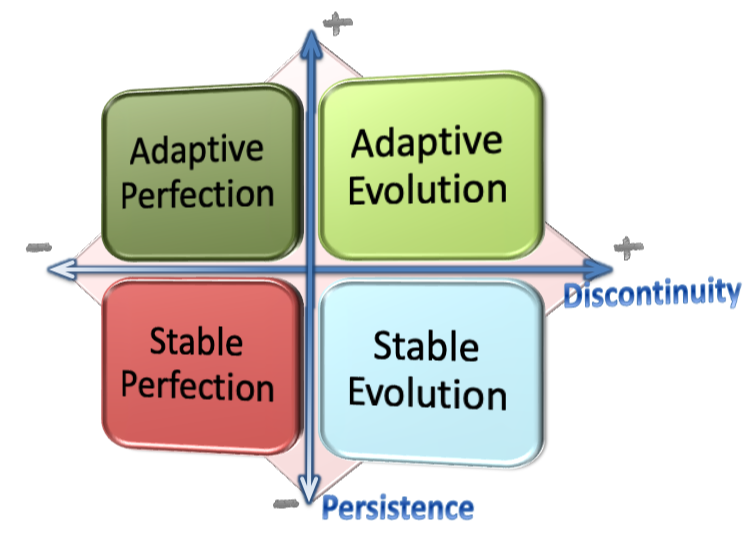

Adaptive Transformation™ helps executives design and execute transformation roadmaps that integrate digital tools, leadership coaching, and cultural alignment—driving resilience and measurable
Structured steps for guiding organizational change:
Organizations resist behavioral change because it disrupts comfort and established patterns. Technology and systems change feel easier.
A transformation reshapes the organization fundamentally—often unpredictably. Some are fast, others slow. All shift the system in meaningful, irreversible ways.
Adaptation blends continuous improvement with innovation. By making small, persistent adjustments, organizations avoid high-risk disruption while remaining resilient.
Designed to diagnose readiness, assess risk, and define the right path forward:

Align strategy to how persistent (P) and discontinuous (D) the change is:
Want to learn more? Visit our FAQ on Adaptive Transformation™.